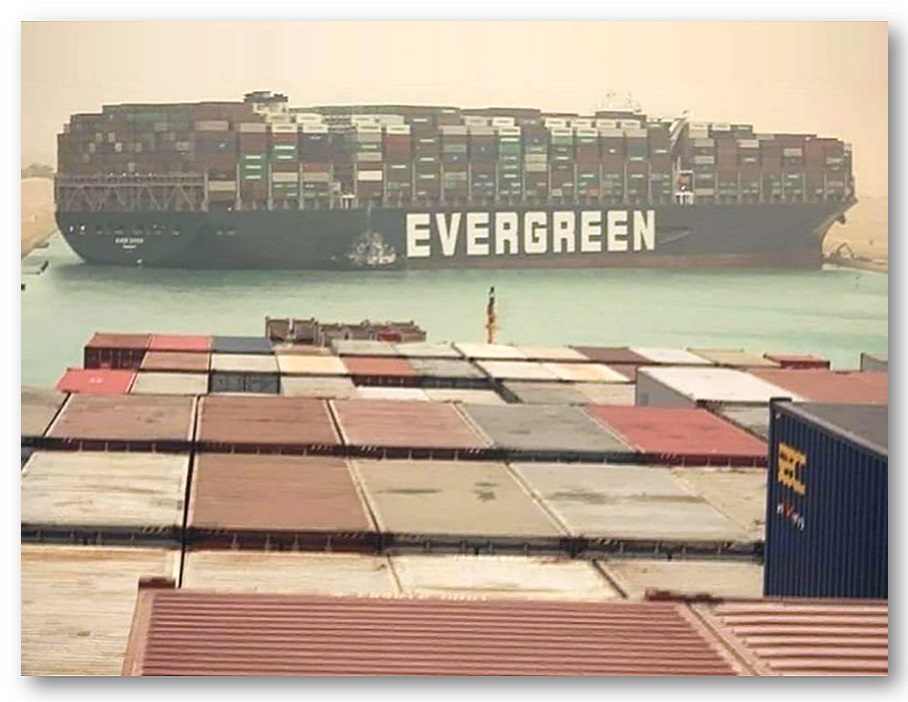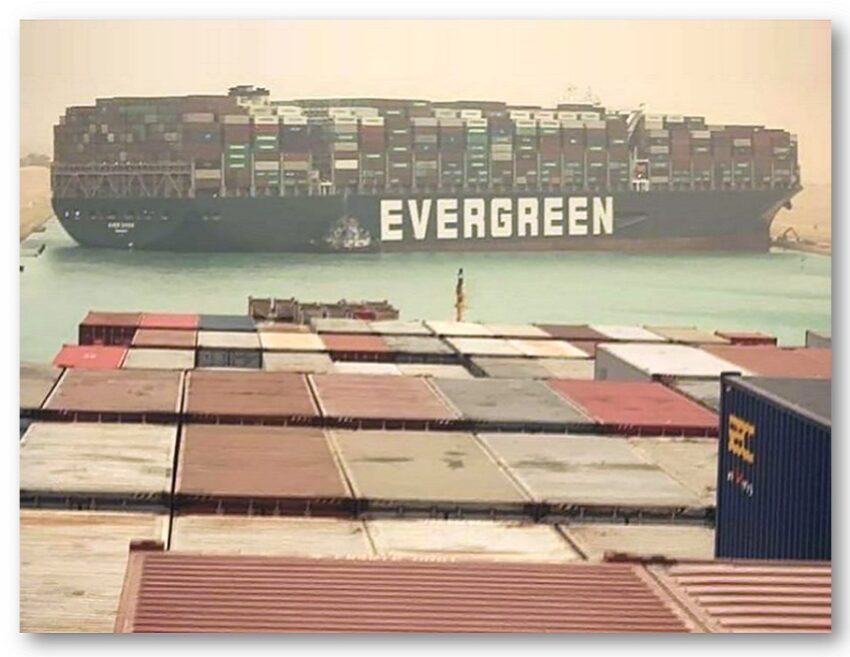The blockage of the Suez Canal in Egypt is a cause of concern for the for the oil and sea cargo shipping industry. The cargo ship Ever Given which was plying on the canal got stuck sideways. This was mainly due to a dust storm on Tuesday which deviated the hull of the vessel. Since then, the entire world is talking about the ongoing crisis at the Suez Canal. The massive cargo shipping containership has blocked the passage for other vessels. Consequently, this has led to a significant traffic jam on the Canal. Today we are publishing a special post on the present blockage of the Suez Canal, the ongoing efforts and how it might impact the ocean cargo shipping industry.
The cause of the blockage
The Ever Given is a 200,000 tons container ship that is 400 m in length and around 60 m in width. This Panama registered ship got stuck in the canal sideways while it was moving from China to the Netherlands. The vessel’s operation states that a sudden dust storm had probably detoured the ship. At the moment, the stern of the containership is touching one side while the bow is stuck on the other bank of the canal.
The ongoing efforts to resolve the crisis
Currently several teams have been deployed for the task of dislodging the vessel from the banks. The tugs and dredgers are attempting to dislodge the ship by dragging it to an area with a deeper water level. The Ever Given is the largest container ship to ever traverse the canal and the canal authorities are now in the process of re-floating the vessel with the help of the tug units. Additionally, diggers are also trying to detach the ship from the canal’s banks. The operation is a complicated one and demands much attention and effort. In the worst case scenario, the ship has to be unloaded before it can be moved. For now, we are assuming that it will take at least a few days before everything gets back to normal.
Dutch company SMIT Salvage, which specializes in rescuing wrecked ships is presently in charge of dislodging the vessel. To quote Martjin Schuttevaer, the spokesperson for SMIT, “It will be critical to inspect the vessel and how deeply it is lodged in the embankment. The question is how solidly she has been grounded.”

A bit about the Suez Canal
The Suez Canal in Egypt is a manmade sea-level canal which was constructed between 1859-1869. This 193 km long canal comes with three natural lakes. Tanker ships often utilize the Suez moving crude oil from the Middle Eastern oil exporters to Europe and the USA. Moving oil between Asia and the North Sea is another use of this Canal. Approximately, 50 ships regularly operate in this canal. Moreover, last year alone, over 19,000 container vessels with a total tonnage of 1.17 billion crossed the Suez Canal.
The impact of this crisis on the global ocean cargo sector
The BBC has recently interviewed Sal Mercogliano, a maritime historian. He opines that although these sorts of events happen very rarely, its impact on the international trade scenario can be enormous. The blockage of the canal can also adversely affect the movement of international sea cargo. Specially between the Mediterranean and the Red Sea. Vortexa, an oil analysis firm, thinks that the obstruction of the passage way could deter the movement of ten cargo vessels carrying over 13 million barrel of crude oil. On the contrary, changing the route of the ships will result in a 2 weeks delay in their arrival time. This has undoubtedly taken a toll on the prices of oil which have already gone up by 2%.
“It could be having a bit of an impact when you consider about 10% of total seaborne oil trade goes through the Suez Canal, but I imagine any disruption would be very temporary,” says Warren Patterson, the Chief of Commodity Strategy for ING Group in Singapore.


